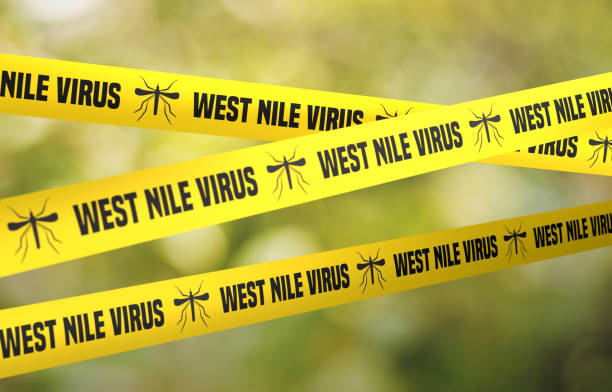Tinea versicolor, also known as pityriasis versicolor, is a common fungal infection that causes patches of discolored skin. It’s caused by an overgrowth of yeast that naturally lives on your skin. This article explores everything you need to know about tinea versicolor, from its causes and symptoms to treatment options and prevention strategies.
What Causes Tinea Versicolor?
The culprit behind tinea versicolor is a type of yeast called Malassezia. This yeast normally lives on your skin without causing any problems. However, certain factors can trigger an overgrowth, leading to the infection:
- Oily Skin: People with oily skin are more prone to tinea versicolor.
- Warm, Humid Climate: Hot and sweaty environments favor yeast growth.
- Sweating: Excessive sweating can create ideal conditions for yeast to thrive.
- Hormonal Changes: Fluctuations in hormones, such as those during pregnancy or puberty, can increase the risk.
- Weakened Immune System: A compromised immune system makes you more susceptible to fungal infections.
As the yeast naturally occurs on the skin, tinea versicolor is not contagious and can affect individuals of any skin color. It is more commonly observed in teenagers and young adults and may cause emotional distress and self-consciousness in some individuals.
Signs and Symptoms:
Tinea versicolor typically presents with the following symptoms:
The overgrowth of yeast leads to skin areas appearing different in color from the surrounding skin. These can manifest as individual spots or patches with varying colors such as white, pink, red, or brown, which may be lighter or darker than the surrounding skin.
Distinctive signs of this infection include:
- Patches that fail to tan like the rest of your skin.
- Spots becoming more noticeable when exposed to sunlight.
- Occurrence of spots anywhere on the body, but commonly found on the neck, chest, back, and arms.
- Dry, scaly spots that may occasionally itch or cause discomfort, though this is uncommon.
- The condition may improve during cooler weather but worsen in warm and humid conditions.
Important Points to Differentiate from Tinea Versicolor
Several other skin conditions can mimic tinea versicolor. Here’s a quick comparison:
- Vitiligo: Vitiligo is an autoimmune disorder affecting skin pigmentation, leading to white patches due to the destruction of melanin-producing cells. Unlike tinea versicolor, vitiligo doesn’t cause itching and affects different areas of the body, with smooth patches contrasting rough or scaly patches in tinea versicolor.
- Seborrheic Dermatitis: Seborrheic dermatitis, also known as dandruff, is characterized by scaly, itchy patches commonly found on the scalp but can also affect oily areas like the face, nose, eyelids, and beard or mustache area. Unlike tinea versicolor, which presents as discolored patches, seborrheic dermatitis patches are typically red and may flake off onto hair or clothing. The rash may appear darker or lighter than the natural skin tone, depending on skin color. In infants, it’s often called cradle cap. Some research suggests that the skin changes associated with seborrheic dermatitis might result from an inflammatory response to the same fungus causing tinea versicolor.
- Pityriasis Rosea: Pityriasis rosea starts with a single large scaly patch, known as the herald patch, followed by smaller patches resembling a Christmas tree pattern. While it may cause mild itching like tinea versicolor, it differs in appearance and suspected cause, possibly linked to viral infections
Diagnosis of Tinea Versicolor
Your doctor can diagnose tinea versicolor based on the appearance of the rash. However, if further clarification is needed, several tests can aid in diagnosis:
- Wood Lamp (Black Light) Examination: Using ultraviolet light, your doctor can identify affected areas, which may appear as fluorescent coppery orange under the light if caused by tinea versicolor.
- Microscopy with Potassium Hydroxide (KOH): Skin cells are collected, soaked in potassium hydroxide, and then examined under a microscope to detect fungal elements.
- Skin Biopsy: A skin sample is obtained by scraping skin and scales from the affected area for microscopic examination. In children, skin cells may be collected by firmly attaching clear tape to the affected area and then removing it for analysis.
Treatment of Tinea Versicolor
Treatment for this versicolor typically involves topical applications of creams, lotions, or shampoos, as well as oral medication in more severe cases. The choice of treatment depends on factors such as the size, location, and thickness of the affected area. Treatment options include:
- Topical Antifungals: These are applied directly to the skin and are available over-the-counter or as prescription products containing ingredients like clotrimazole, ketoconazole, miconazole, and others. They work by controlling yeast growth.
- Antifungal Pills: These may be prescribed for severe or recurrent cases to expedite healing. However, they may have side effects, and close monitoring by a doctor is necessary during treatment.
Natural Treatment Options
While antifungal medications are the primary treatment for this versicolor, some natural remedies may provide additional relief, although their effectiveness is not well-supported by evidence. These include:
- Aloe Vera: High concentrations of aloe vera extract have shown potential in slowing or preventing the growth of the fungus causing tinea versicolor.
- Honey: Known for its antimicrobial properties, honey, particularly when combined with olive oil and beeswax, may alleviate symptoms of tinea versicolor.
- Turmeric: With possible antifungal properties, turmeric has been used traditionally to treat rashes and itching, although more research is needed to confirm its effectiveness.
FAQs:
- Is tinea versicolor contagious? Tinea versicolor is not contagious, unlike some other fungal skin infections like ringworm.
- How fast can this fungal infection be treated? With treatment, the scaly rashes usually heal within 2 to 4 weeks, but discoloration may take 6 months to a year to fade completely.
Prevention Tips
Episodes of tinea versicolor are common due to the normal presence of the yeast causing the infection on the skin. Here are some strategies to manage the condition and reduce your chances of developing this fungal infection:
- Avoid Oily Skin Products: Opt for non-comedogenic (oil-free) products.
- Reduce Sweating: Wear loose clothing and breathable fabrics like cotton.
- Limit Sun Exposure: Reduce sun exposure, as sunlight can trigger or worsen the rash. Use sunscreen with SPF 30 or higher to protect your skin, especially if going outdoors.
- Maintain Good Hygiene: Shower regularly, especially after sweating. Use medicated cleansers weekly for a few months to prevent recurrence, especially if you live in warm, humid areas.
- Consider Antifungal Shampoos: Use antifungal shampoos or dandruff shampoos with selenium sulfide. Use them occasionally, especially before sun exposure if you are prone to outbreaks.
Sources
- American Academy of Dermatology
- American Osteopathic College of Dermatology
- The Merck Manual
- DermNet NZ
- WebMD
- Mayo Clinic
- UpToDate
- PubMed: National Library of Medicine
- Cleveland Clinic

